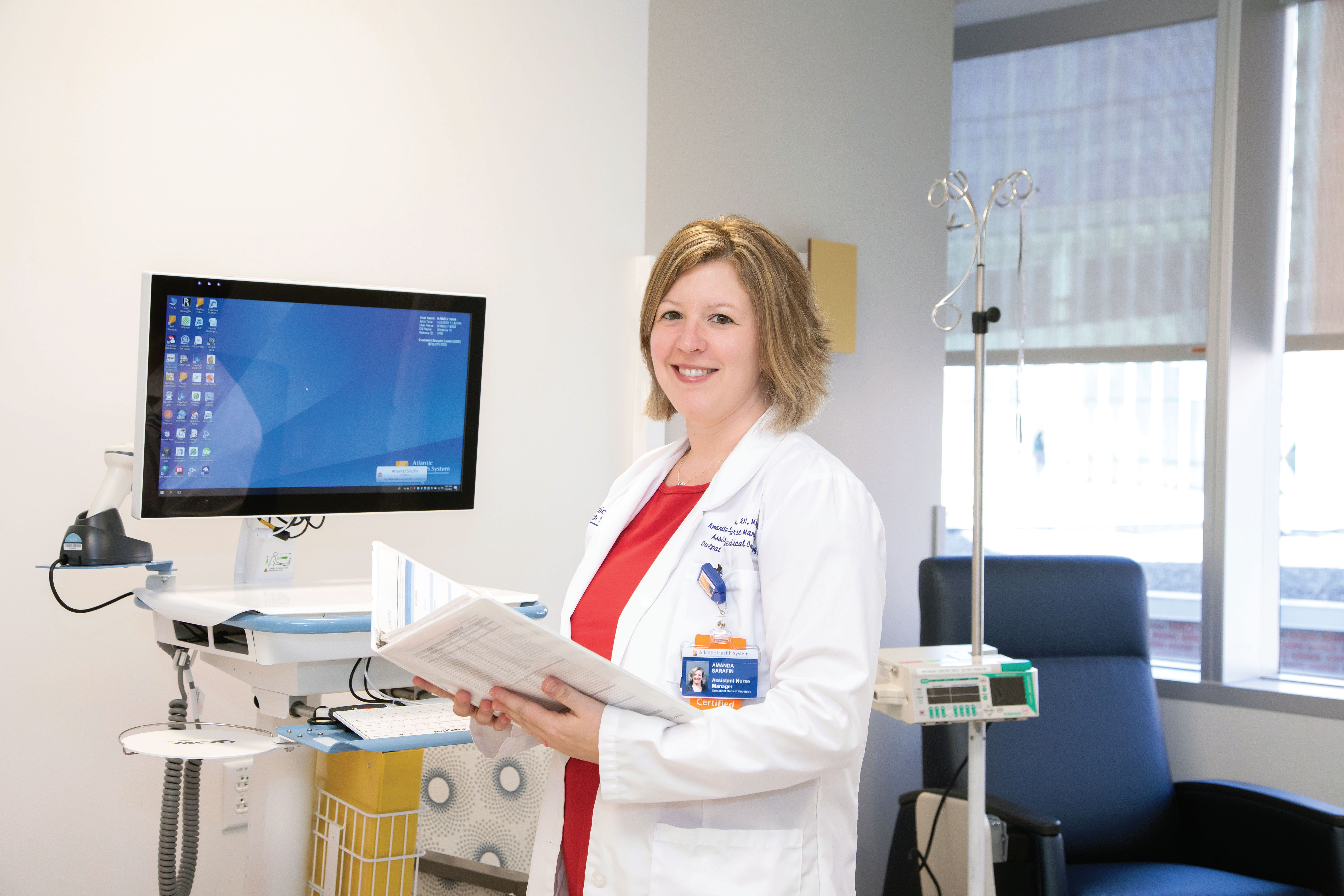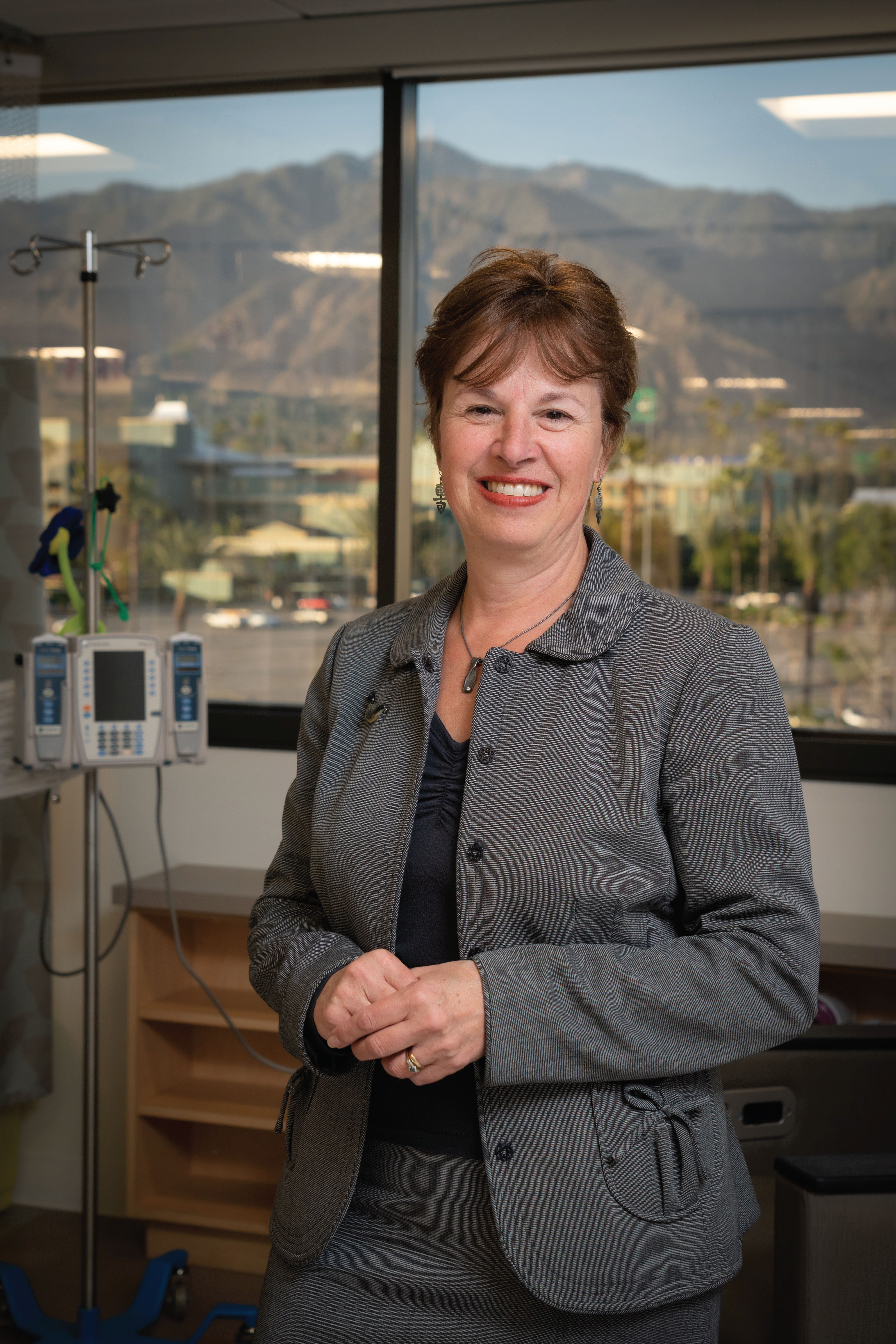Staffing Levels in Ambulatory Oncology Nursing
Convenience. Flexibility. Normalcy. Ambulatory oncology clinics deliver on those three crucially important aspects of treatment to many patients with cancer, offering expert care without a hospital stay or traveling far from home.
More cancer treatments are being offered in the outpatient setting than ever before, but ambulatory clinic staffing models have not kept pace with the growing demand of outpatient treatment. For many nurses, working in an ambulatory setting provides a rewarding, challenging environment that requires expert care and significant multitasking. But without adequate staffing levels, clinics are at risk for potential dangers in practice, increased nursing burnout, and lower patient satisfaction. Addressing staffing levels in ambulatory oncology nursing is vital to providing the best possible care for patients with cancer.
Why Proper Staffing Is Critical
As the demand for ambulatory oncology clinics grows, nurses are feeling the pressures of a building patient load.

“Oncology treatments are predominantly delivered in ambulatory settings, and these treatments are highly complex. But unfortunately, very little literature discusses the best or safest way to staff an ambulatory oncology clinic. Developing appropriate staffing models is an ongoing challenge for all of us in oncology nursing care, and according to many of my colleagues across the country, it’s a widespread issue,” ONS member Amanda Sarafin, MSN, RN, OCN®, assistant nurse manager at Morristown Medical Center’s Carol G. Simon Cancer Center in New Jersey and member of the Northwest New Jersey ONS Chapter, says.
With tight staffing levels, nurses working in the ambulatory setting must be equipped to handle the ever-changing flow of patients and their needs—all within a tight timeframe. For ONS member and Director-at-Large Anne Ireland, MSN, RN, AOCN®, CENP, clinical director of ambulatory services at City of Hope National Medical Center in Duarte, CA, and member of the Greater Los Angeles ONS Chapter, current outpatient staffing levels require nurses to be extremely efficient with their time and possess tremendous skills in priority setting.
“Oncology nurses working in ambulatory settings must balance the complexity of patient assessment with delivery of treatment and care, then provide associated education and psychosocial support in a setting with many patient encounters per day and, often, little allowance for the time required for this important nursing care,” Ireland says.

ONS, with feedback from its members, developed and released its Position Statement on Staffing of Ambulatory Treatment Centers in late 2019 (https://www.ons.org/make-difference/ons-center-advocacy-and-health-policy/position-statements/nurse-staffing-ambulatory-treatment-centers), which indicates that acuity can’t be measured solely by a patient’s time spent receiving treatment. Staffing models must consider patient education needs, premedication and observation periods, and whether translators or other support staff are involved. When inadequate staffing levels result in nurses having too many patients who need their care simultaneously, it can negatively affect the success of that care.
“Oncology nurses require time and support to provide the best level of patient care. When staffing levels don’t meet those needs, the unthinkable can happen. If nurses don’t have that support and must run from one patient to the next with little time in between, the possibility for mistakes can rise,” Sarafin says. “More often than not, the harm is reflected back on the nurses themselves, leading to things like burnout and compassion fatigue.”
To address the issue, Ireland says that organizations can draw parallels to inpatient staffing models when discussing needs in an ambulatory setting.
“Staffing levels are known to affect quality of care and patient outcomes in hospital settings. There’s little published on the relationship between ambulatory staffing and patient outcomes, but we have to assume there’s a similar impact,” Ireland says. “The effect of inadequate staffing levels extrapolated from hospital settings has been shown to decrease nurse satisfaction, increase staff burnout and turnover, and lead to potential errors in patient care.”
Studies examining the link between nurse staffing and patient safety events (https://psnet.ahrq.gov/primer/nursing-and-patient-safety) report increased morbidity and mortality with high nurse-patient ratios.
The Challenges of Staffing an Ambulatory Clinic
Sarafin explains that designing a catch-all staffing model for ambulatory clinics is challenging. ONS member feedback at the 44th Annual Congress and discussions on the ONS communities have shown that not every institution will have the same nursing needs, and staffing levels must be adjustable when appropriate (https://www.ons.org/make-difference/ons-center-advocacy-and-health-policy/position-statements/nurse-staffing-ambulatory-treatment-centers).
“When thinking about staffing models—and getting institutional support for more ambulatory oncology nursing staff—it’s hard to convey just what the day is going to bring. Oncology is incredibly complex, and it’s nearly impossible to quantitatively explain the qualitative aspect of ambulatory nursing,” Sarafin says. “From soup to nuts, you cannot predict your day, and that’s a difficult thing when you’re trying to effectively staff an ambulatory center.”
Sarafin emphasizes ambulatory clinics’ fast-paced environments and the level of knowledge required for nurses.
“Nurses have to be knowledgeable, quick on their feet, and ready to handle anything the day throws at them. It’s not an easy setting in which to work,” Sarafin says. “That’s why we require the training that we do, because it can be a taxing, challenging setting for patient care.”
Building the Evidence
To address evolving staffing requirements in ambulatory oncology nursing, research must focus on ways to develop staffing models based on solid evidence for safe patient care.
“More oncology care is transitioning to the ambulatory setting where we’ve historically had less evidence to guide nurse staffing needs. There’s significant variability across locations with care being delivered by both nonlicensed staff and non-RN licensed staff,” Ireland says. “Although there are several publications on acuity and nurse staffing in ambulatory settings, we lack a clear benchmark. We don’t have consensus on what the RN does versus what they can delegate to licensed vocational nurses, medical assistants, and others. That’s where we can and will step in and get to work.”
Both Ireland and Sarafin acknowledge the need for further research into the ambulatory staffing.
“We’re not currently able to articulate the nursing role in ambulatory care,” Ireland says. “We have to find answers to these questions: Is it okay if the pharmacist delivers the chemotherapy education? Is it okay if the medical assistant does the preoperative teaching? Is it okay if the licensed vocational nurse performs the ‘on treatment visit’ for the patient receiving radiation treatment? And if the answer is no, then what’s the impact on our patients and their cost of care?”
Meeting Nursing and Patient Needs
Nurses are vital to addressing staffing levels in ambulatory oncology. To properly advocate for change, nurses must learn to understand the data and metrics available (https://www.ons.org/make-difference/ons-center-advocacy-and-health-policy/position-statements/nurse-staffing-ambulatory-treatment-centers) so they can recommend staffing levels that support quality care delivery. Ireland says that nurses have a few ways to start discussions about inadequate staffing levels in practice.
“Know your RN scope of practice. Understand what you can and cannot do, as well as what others can do on your behalf,” Ireland says. “But also, develop a detailed list of the care your patients need that require an RN—and even more specifically, an oncology RN. Collaborate with other similar settings in your state to better understand staffing levels from site to site, and be prepared to articulate the benefit to patients and families when appropriate RN staffing is in place.”
Sarafin says that oncology nursing must make a concerted effort to overcome staffing challenges, and she encourages her peers and colleagues to share their experiences and collaborate for solutions.
“The demand for nurses with the education and skills required to meet the complex needs of patients in ambulatory settings is only going to grow,” Sarafin says. “It’s a critical topic that needs more discussion, research, and examination to find an acuity system that works for outpatient centers—just like ones that hospitals have for their inpatient settings. We should lean on the oncology nursing community we’ve built to share ideas, resources, workflows, and processes to help define the best way to tackle this challenge. It’s important for our patients, and it’s important for our nurses in the ambulatory setting.”
But organizations like ONS are spearheading the charge to make a change in practice, Ireland explains.
“It’s a hard question, but—as an ONS Board member—it’s a question we have to answer,” Ireland says. “As a nursing organization, we can bring together this community of bright, bold nurses to understand, identify, and solve the challenging questions facing our practice—and ambulatory staffing is one of them.”
